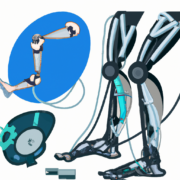This course covers the principles of International Economics covering Marketing Teade and Intercultural aspects.
Archives
Different types of documentation are dealt with on a phase-specific basis – Implementation of a concrete software development project in project teams of medium size (e.g. a web service /web app, a stand-alone application or a control system).
This course is an overview and introduction to International Economics.
This module introduces the student to speech-to-text interpreting, also known as print interpreting. The student will learn about what STT interpreting is, what are the requirements for working as an STT interpreter and what the work can be like in practice. The student will independently practice the 10 finger typing method and try interpreting a couple of short videos.
This module introduces the student to the Finnish legislation regarding accessibility, teaching, and people with disabilities’s right for assistance in the classroom. The student will learn about the education-specific accessibility legislations as well as more general legislation regarding the rights of the people with disabilities. The student will also reflect on these topics and think about how they relate to their own experiences and possible future plans in the field of education.
During this module, the student will modify their own document (thesis, publication, course work…) to make it more accessible. The module teaches how to make documents accessible and what kind of methods are available. The module introduces for example how to make accessible tables, images, footnotes, and charts.
• Methodical integration of simulation tools in the development process
• Challenges for the use of simulation tools in the technical development process
• Typical Methods and Systems for Dynamic Multibody Analysis (MDS), Structural Mechanics Analysis (FEA) and Fluid Mechanics Analysis (CFD)
• Possibilities and limitations for the use of simulation tools in the product development process
• Time based frame conditions and bottlenecks for the application of simulation projects in the development process
• Interaction between simulation and experiment
From designing for disability, to designing for abilities and for augmenting human capabilities, this thematic module takes a broader look at the trends in research on accessibility with a focus on ideas, designs, prototypes, and products for the 21st century. The module will introduce ongoing research on Cyborgs, artificial limbs and augmentations, brain-computer interactions, AI, etc., through published research in HCI and accessibility, and other venues. The module discusses how our understanding of human abilities is changing, and the different research trajectories from where we are today.
The thematic module briefly introduces the student to artificial intelligence (AI) and some of the ways in which AI is used to empower people with disabilities. Lectures focus on three cases; 1) communication and connection, 2) employment and 3) daily life. AI can empower people with disabilities, but there are also concerns about the diversity, inclusiveness, and accessibility of AI, which are also briefly addressed.
The module introduces the ways MT is being used today, specifically when it is used for ‘gisting’, or achieving an understanding of a text that is in a language a person does not speak themselves. The module will then focus on the various proposals and projects focused on using MT to promote linguistic accessibility.










